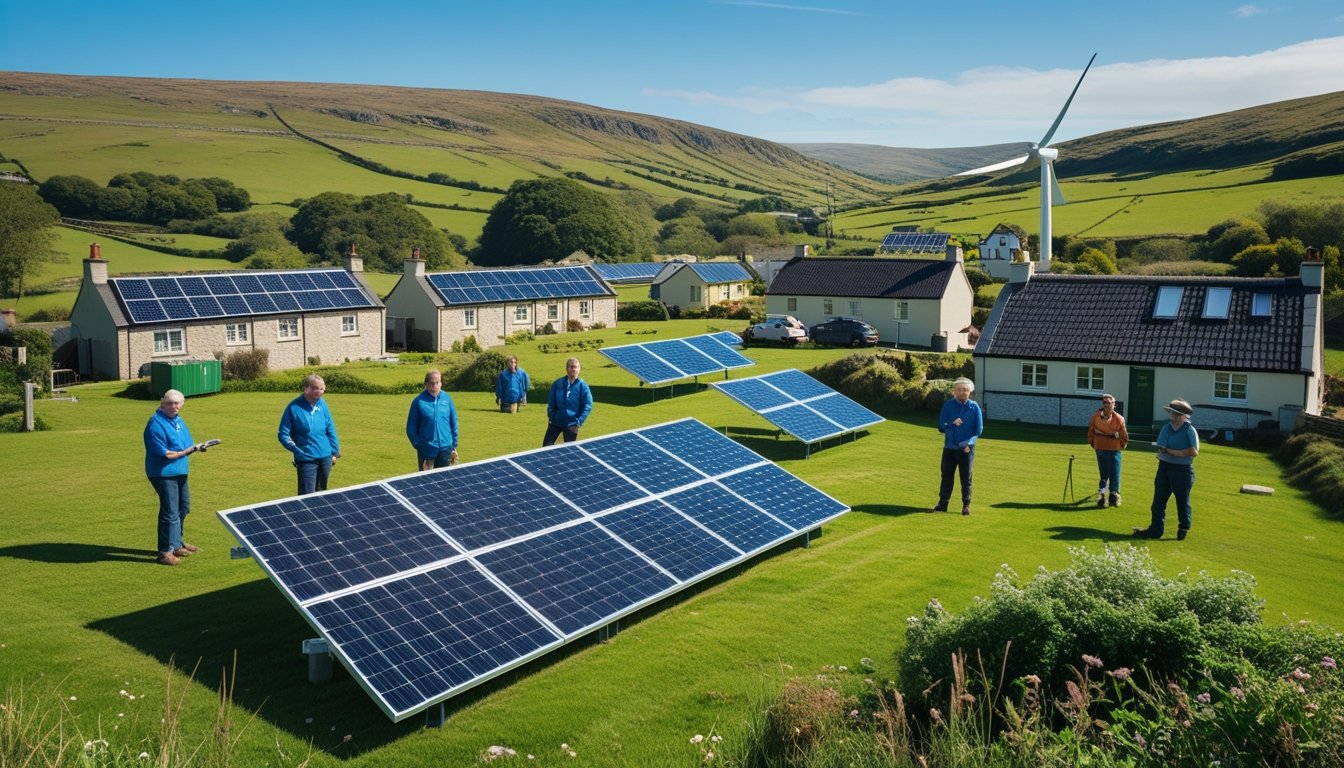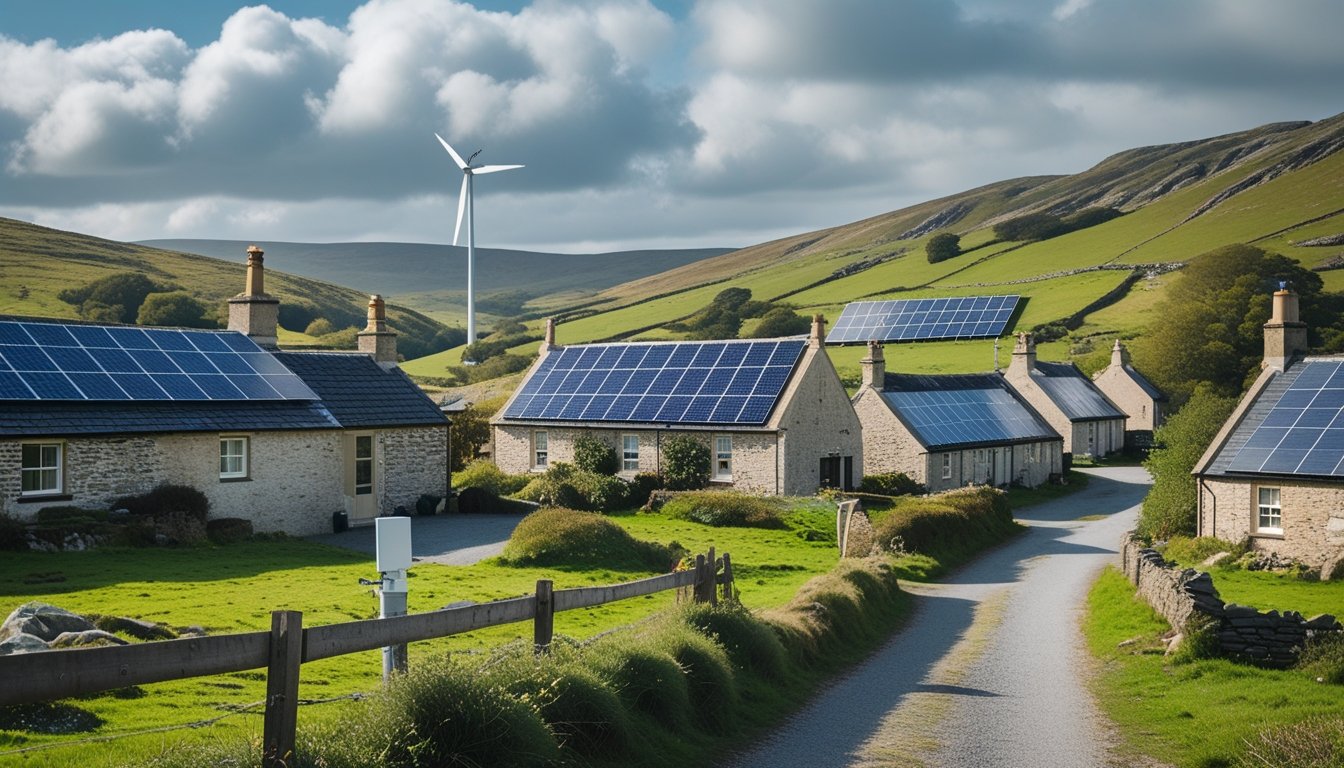Late updated: 22 Nov 2025 13:11
Written by: Oliver Bennett
Sustainable Energy Solutions For Remote UK Communities: A Pathway To Resilience
Sustainable energy solutions are transforming remote UK communities by offering cleaner, more reliable, and efficient power options. With diverse renewable technologies such as solar and wind, these communities can reduce their reliance on traditional energy sources and lower carbon footprints. Our commitment to community-led and locally-owned renewable projects can significantly enhance energy independence and environmental sustainability for remote areas.

As we explore these energy solutions, it's crucial to understand both the benefits they bring and the challenges they present. These innovations are not only about reducing emissions but also about creating resilient energy networks that cater to the unique needs of remote locales. From hybrid systems to smart grids, these technologies open doors to a more sustainable future for everyone.
Key Takeaways
- Remote UK communities benefit from sustainable energy solutions.
- Renewables enhance energy independence and sustainability.
- Implementing new technologies poses benefits and challenges.
Key Sustainable Energy Technologies for Remote UK Communities
Remote UK communities are increasingly turning to sustainable energy technologies to enhance energy independence and reduce reliance on fossil fuels. In such areas, renewable resources, microgrids, and energy storage systems offer promising solutions to meet energy demands efficiently and sustainably.
Renewable Energy Options
In remote UK locations, renewable energy sources provide a versatile and sustainable approach to power generation. Solar power and wind energy are at the forefront, where solar panels and wind turbines convert natural resources into electricity. Small-scale hydropower installations also harness local water bodies to contribute to the energy mix, offering consistent output where water flow is reliable. Additionally, biomass and bioenergy plants utilise local organic materials to generate energy, providing a clean energy solution that also supports local agriculture.
By adapting these technologies, communities can reduce their dependency on diesel generators, which are often costly and environmentally harmful. The diversification of renewable energy options ensures a resilient energy supply that can adapt to seasonal variations and maximise the use of local resources. This empowers communities to maintain energy independence and meet their unique consumption needs.
The Role of Microgrids
Microgrids play a crucial role in delivering electricity to remote communities by connecting distributed energy resources into a localised grid system. These systems support the integration of multiple renewable sources such as solar and wind into a single network, optimising energy distribution and reliability. Microgrids allow for flexible system design, which is essential for adapting to the specific geographical and climatic needs of a region.
One of the significant advantages of microgrids is their ability to operate independently of the national grid, providing a reliable energy infrastructure in often isolated locations. In cases of grid failure or excessive demand, microgrids ensure a continuous supply of power, reducing the risk of outages. The system's scalability and adaptability make it ideal for meeting the unique energy goals of remote communities.
Energy Storage Solutions
Energy storage systems are vital in balancing energy supply and demand, especially for renewable sources that may have intermittent outputs. Batteries and other storage technologies, such as pumped storage or flywheels, save excess energy produced during peak generation periods. This stored energy is then available during periods of high demand or when renewable generation is low, ensuring a stable and consistent energy supply.
Effective energy storage solutions enhance the overall efficiency and reliability of energy systems in remote areas. They enable communities to fully utilise their renewable resources, reducing the reliance on backup fossil fuel systems and encouraging a cleaner energy landscape. By incorporating advanced energy storage solutions, we can support long-term sustainability and resilience in these communities.
Benefits and Challenges of Implementing Sustainable Energy in Remote Communities

Implementing sustainable energy solutions in remote communities offers opportunities for enhancing socioeconomic welfare, reducing environmental impact, improving economic growth, and ensuring consistent energy availability. These solutions significantly contribute to sustainability and help communities reduce their carbon footprint by transitioning to clean energy sources. Addressing challenges related to energy access and grid stability remains essential.
Socioeconomic and Environmental Impacts
Adopting sustainable energy systems provides numerous benefits for remote communities. One of the key advantages is a reduced carbon footprint, which contributes to combatting climate change. By relying on clean energy sources like wind, solar, and hydro, these communities can significantly lower greenhouse gas emissions.
Socioeconomic improvements also occur through increased local employment opportunities. As communities build and maintain renewable energy facilities, new jobs emerge in areas such as installation, maintenance, and operations. Additionally, remote communities can protect their natural ecosystems by moving away from harmful fossil fuels, supporting biodiversity.
Economic Development and Energy Costs
Economic development is another significant benefit of implementing sustainable energy solutions. By investing in renewable energy infrastructure, remote communities can diversify their economies and reduce reliance on imported fossil fuels. This shift can lead to more stable and predictable energy costs, making the area more attractive to businesses and investors.
Lower energy costs mean residents and businesses save money over time. Renewable energy sources often have lower operational costs and fewer fluctuations in price than traditional energy sources. This financial stability can foster greater economic resilience and enable communities to allocate resources to other pressing needs.
Energy Security and Access
Energy security is a critical consideration for remote communities, where traditional power grids may not be accessible or reliable. Implementing decentralised renewable energy systems ensures that these communities have a more resilient energy supply. Technologies like solar-battery systems offer robust power solutions, significantly improving reliability by reducing reliance on diesel generators.
Enhanced energy access is critical for supporting the daily lives and development aspirations of residents. Secure and dependable energy supplies allow for improved health care, education, and communication services. By harnessing local renewable resources, communities gain greater control over their energy production, promoting self-sufficiency and resilience in the face of external disruptions.
Frequently Asked Questions

In addressing sustainable energy options for remote UK communities, we focus on implementing wind and solar energy systems, leveraging local resources, the role of microgrids, and funding opportunities. We also examine how these communities can efficiently store renewable energy.
What are the best strategies for implementing wind energy in isolated UK regions?
For wind energy to be effective in remote UK regions, site selection is critical. We must evaluate wind patterns and identify areas with consistent, strong winds. Engaging with local stakeholders ensures community support and helps tailor solutions to specific regional needs. Investing in advanced turbine technology that suits varied terrains is also essential.
How can solar power be optimised for use in remote UK communities year-round?
Solar power optimisation in these communities requires addressing seasonal variations. By combining photovoltaic panels with energy storage systems, we can ensure electricity supply even during low sunlight periods. Installing solar panels at optimal angles and using tracking systems can increase efficiency. Moreover, integrating smart inverters can enhance overall system performance.
What role do microgrids play in enhancing energy independence for UK villages with limited access to the national grid?
Microgrids can provide critical energy independence. They allow remote communities to generate and manage their own electricity, reducing reliance on the national grid. In adopting microgrids, communities can utilise local renewable sources more effectively and maintain power during grid outages. These systems offer flexibility and resilience crucial for isolated regions.
How can remote UK communities leverage local resources for sustainable energy production?
Using local resources reduces transportation costs and environmental impact. By assessing available materials and natural conditions, communities can choose appropriate renewable energy technologies, such as biomass from local farming waste or small-scale hydroelectric projects. Collaboration with local experts can enhance project success and sustainability.
What funding opportunities are available for renewable energy projects in the UK's rural areas?
Government grants and subsidies are significant funding sources. Various programmes support clean energy initiatives in rural areas. Private investments and community financing schemes also play a crucial role. Access to these resources often requires thorough project proposals that align with policy goals and demonstrate potential impact.
What are the challenges and solutions for storing renewable energy in the UK's off-grid communities?
Energy storage ensures reliability but poses challenges such as cost and technology selection. Batteries are commonly used, yet their effectiveness relies on capacity and lifespan. We must consider innovative solutions like flywheel storage or other emerging technologies. Developing a hybrid approach that combines different storage methods could mitigate these challenges, providing a stable and continuous energy supply.
